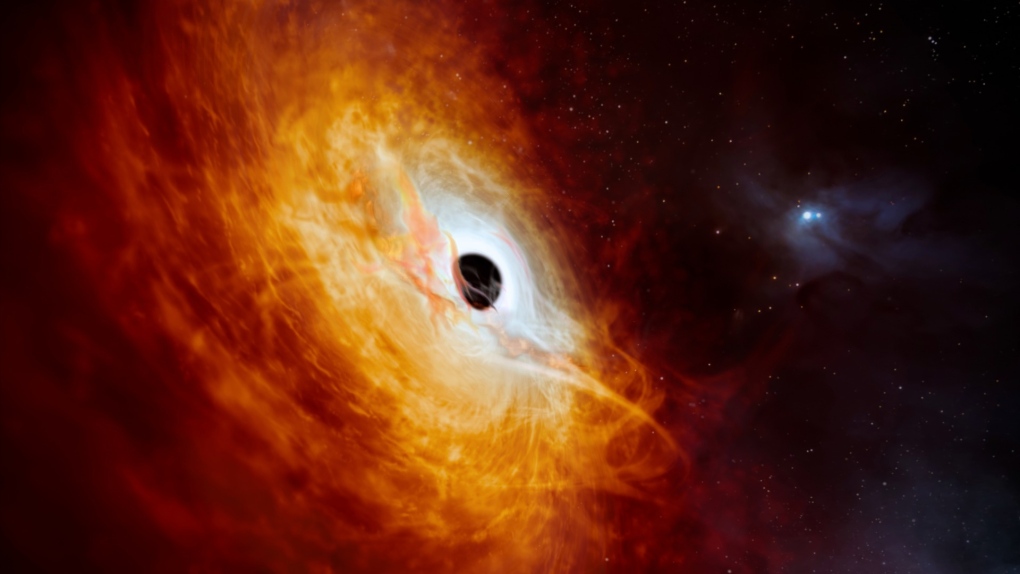Cosmic Feast: Black Hole Devours Suns, Ignites Universe's Brightest Quasar

Brightest quasar ever seen is powered by black hole that eats a 'sun a day'
Brace yourself for astronomical superlatives! Astronomers have discovered a quasar, the most luminous type of object in the universe, outshining anything ever seen before. And the secret to its brilliance? A monstrous black hole with an insatiable appetite, consuming a star's worth of material every single day.
Monster at the Center:
At the heart of this record-breaking quasar lies a supermassive black hole with a mass billions of times greater than our Sun. But it's not the mass that matters here, it's the feeding frenzy. This cosmic behemoth gobbles up a staggering solar mass of gas and dust every day, releasing an unimaginable amount of energy in the process.
Advertisement
Shining Brighter Than a Trillion Suns:
Advertisement
The energy released by the black hole's feast fuels the quasar's immense luminosity. It shines with the combined brilliance of over 500 trillion suns, making it the brightest object ever observed in the distant universe. Its light, traveling for billions of years, bathes us in a celestial spectacle, offering a glimpse into the early universe and the formation of massive galaxies.
Advertisement
A Window to the Past:
Advertisement
This newly discovered quasar shines a spotlight on the distant past, nearly 13 billion years ago. Back then, the universe was just a few percent of its current age, and galaxies were in their formative stages. Studying this quasar helps us understand how supermassive black holes played a crucial role in shaping galaxies and driving their evolution.
FAQs:
How can a black hole be so bright?
The energy released as material falls into the black hole heats up the surrounding gas and dust to millions of degrees, causing it to emit intense radiation across the electromagnetic spectrum, including visible light.
Do all black holes power quasars?
No, only black holes actively accreting large amounts of material are bright enough to be classified as quasars. Most black holes are relatively quiet and don't shine as brightly.
Will this quasar eventually "burn out"?
As the surrounding gas gets depleted, the black hole's feeding frenzy will slow down, and the quasar's luminosity will diminish.
Can we see this quasar with the naked eye?
Unfortunately, no. Despite its incredible brightness, it's simply too far away to be visible without powerful telescopes.